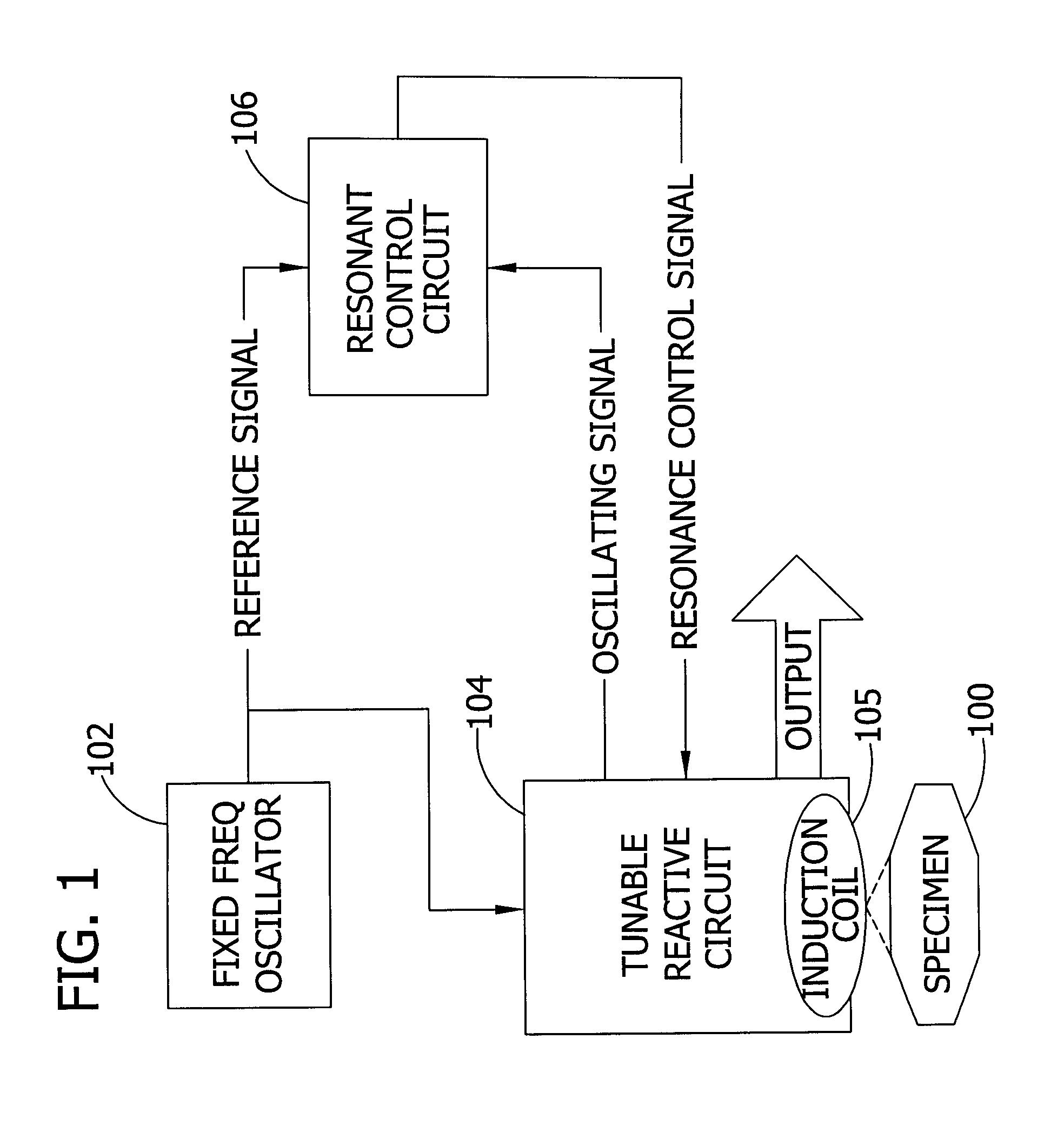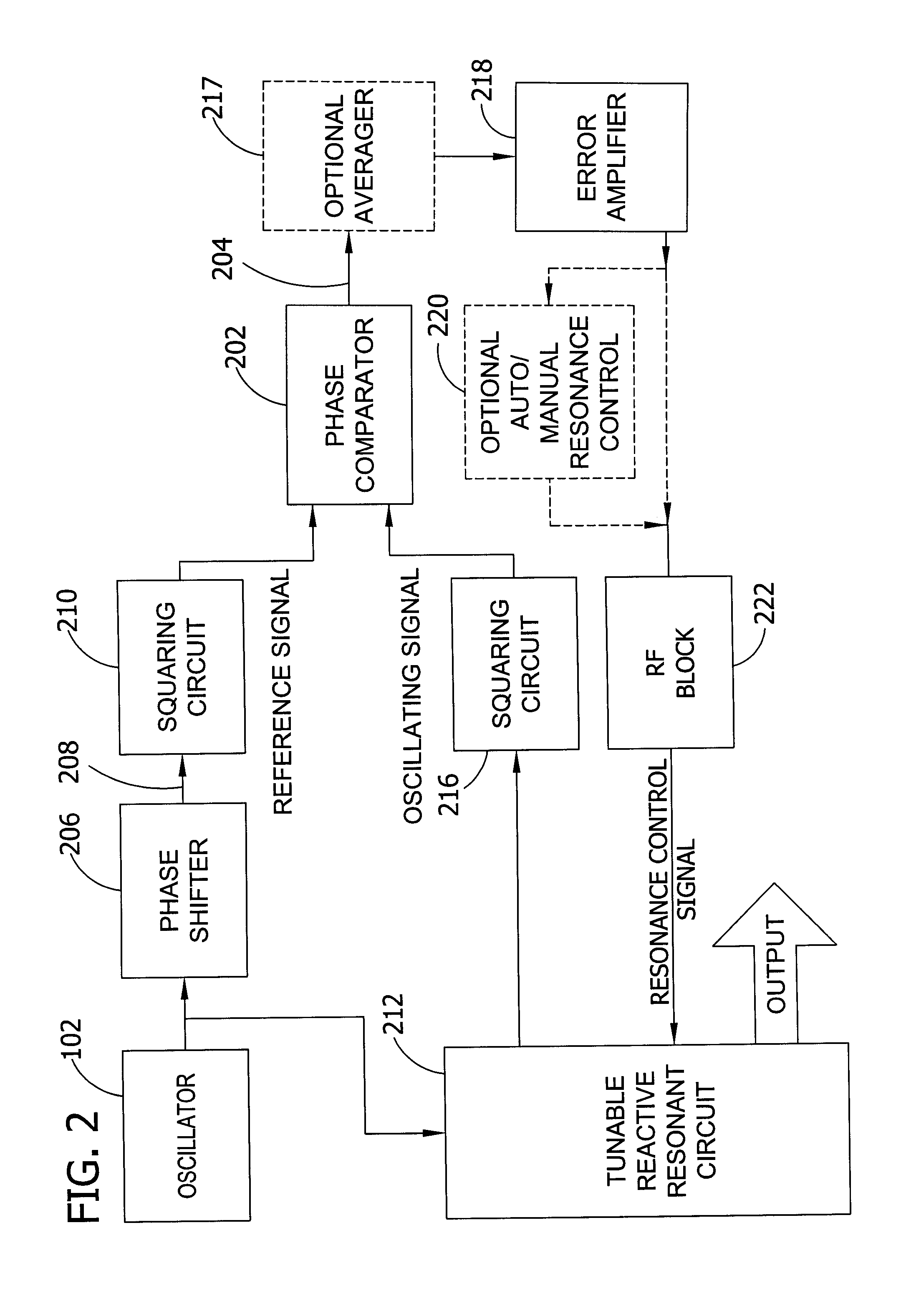Resonant coil for measuring specimen condition
a coil and specimen technology, applied in the field of conductivity measurements, can solve the problems of confusing measurement interpretation, less straightforward interpretation, and use of coil related parameters by either expensive or awkward instruments
- Summary
- Abstract
- Description
- Claims
- Application Information
AI Technical Summary
Benefits of technology
Problems solved by technology
Method used
Image
Examples
Embodiment Construction
[0013]In one form, the invention comprises an apparatus for measuring a condition (e.g., conductivity) of a specimen 100, such as human tissue, as illustrated in FIG. 1. A fixed frequency oscillator 102 provides a fixed frequency reference signal having a phase. An induction coil of a tunable reactive circuit 104, such as a series RLC circuit, is driven by the reference signal of the oscillator 102. The fixed frequency oscillator 102 is independent of and isolated from the tunable reactive circuit 104. The circuit 104 includes an induction coil 105 adapted to be positioned adjacent the specimen 100. The circuit 104 generates an oscillating signal corresponding to the condition of the specimen 100. In other words, the proximity of the specimen 100 to circuit 104 affects the point of resonance of the reactive circuit, such as by modifying the impedance of the reactive circuit.
[0014]A resonant control circuit 106 compares the reference signal to the oscillating excitation signal and pr...
PUM
 Login to View More
Login to View More Abstract
Description
Claims
Application Information
 Login to View More
Login to View More - R&D
- Intellectual Property
- Life Sciences
- Materials
- Tech Scout
- Unparalleled Data Quality
- Higher Quality Content
- 60% Fewer Hallucinations
Browse by: Latest US Patents, China's latest patents, Technical Efficacy Thesaurus, Application Domain, Technology Topic, Popular Technical Reports.
© 2025 PatSnap. All rights reserved.Legal|Privacy policy|Modern Slavery Act Transparency Statement|Sitemap|About US| Contact US: help@patsnap.com



